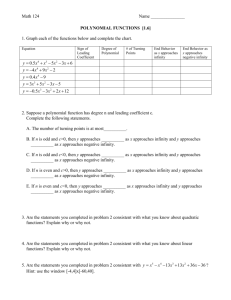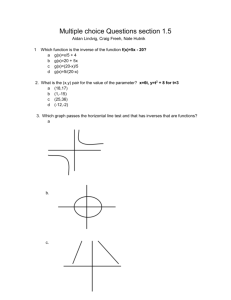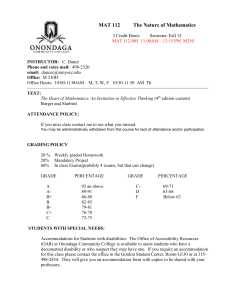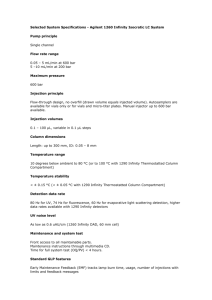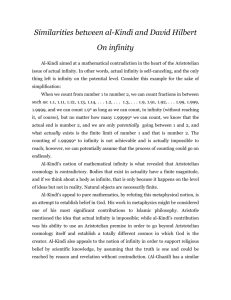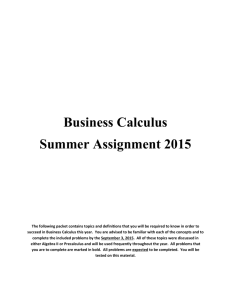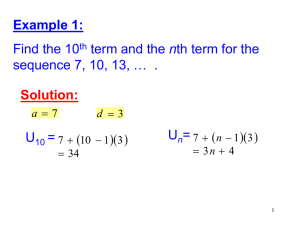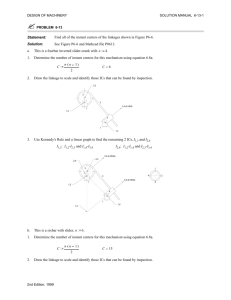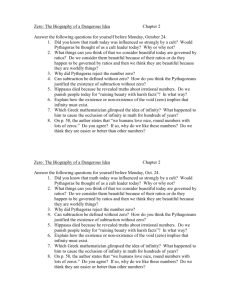Exploring Polynomials Guided Discovery
advertisement
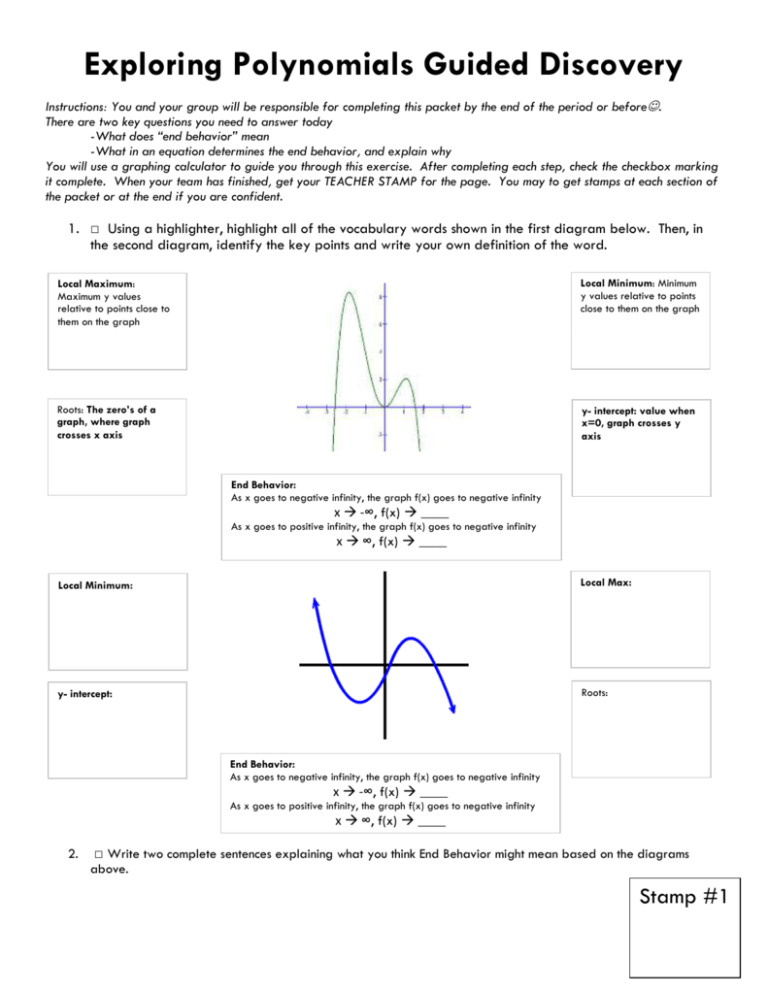
Exploring Polynomials Guided Discovery Instructions: You and your group will be responsible for completing this packet by the end of the period or before. There are two key questions you need to answer today -What does “end behavior” mean -What in an equation determines the end behavior, and explain why You will use a graphing calculator to guide you through this exercise. After completing each step, check the checkbox marking it complete. When your team has finished, get your TEACHER STAMP for the page. You may to get stamps at each section of the packet or at the end if you are confident. 1. □ Using a highlighter, highlight all of the vocabulary words shown in the first diagram below. Then, in the second diagram, identify the key points and write your own definition of the word. Local Maximum: Maximum y values relative to points close to them on the graph Local Minimum: Minimum y values relative to points close to them on the graph Roots: The zero’s of a graph, where graph crosses x axis y- intercept: value when x=0, graph crosses y axis End Behavior: As x goes to negative infinity, the graph f(x) goes to negative infinity x -∞, f(x) ____ As x goes to positive infinity, the graph f(x) goes to negative infinity x ∞, f(x) ____ Local Minimum: Local Max: y- intercept: Roots: End Behavior: As x goes to negative infinity, the graph f(x) goes to negative infinity x -∞, f(x) ____ As x goes to positive infinity, the graph f(x) goes to negative infinity x ∞, f(x) ____ 2. □ Write two complete sentences explaining what you think End Behavior might mean based on the diagrams above. Stamp #1 3. □ Highlight key information in the following passage End behavior describes how the graph moves at the “extremes”. When we say “as x goes to negative infinity”, we mean as we trace the graph to the left, so the x values get more and more negative. Then, the second part of the statement describes the direction of the graph – does it go up to positive infinity, or down to negative infinity? Then we describe the same thing as we move to the right – “as x goes to infinity”, meaning as the x values getting larger. 4. □ Consider the following examples, then complete the table. End Behavior Graph End Behavior 10 8 6 x -∞, f(x) ____ 4 x ∞, f(x) ____ 2 0 -10 -8 -6 -4 -2 0 2 4 6 8 10 0 2 4 6 0 2 4 6 8 10 0 2 4 6 8 10 0 2 0 2 -2 -4 -6 -8 -10 10 8 6 x -∞, f(x) ____ 4 x ∞, f(x) ____ 2 0 -10 -8 -6 -4 -2 8 10 -2 -4 -6 -8 -10 10 8 6 x -∞, f(x) ____ 4 2 0 -10 -8 -6 -4 -2 -2 x ∞, f(x) ____ -4 -6 -8 -10 10 8 6 4 2 0 -10 -8 -6 -4 -2 -2 -4 -6 -8 -10 10 8 6 4 2 0 -10 -8 -6 -4 -2 4 6 8 10 -2 -4 -6 -8 -10 10 8 6 4 2 0 -10 -8 -6 -4 -2 4 6 8 10 -2 -4 -6 -8 -10 Stamp #2 5. □ Graph the following polynomials on your graphing calculator and sketch a small picture of the graph in the space provided. 6. □ What patterns do you notice about the end behavior of the even degree graphs? y = x2 Y = x5 y = x4 7. □ What patterns do you notice about the end behavior of the odd degree graphs? Y = -x3 Y = x7 y = -2x6 8. □ What happens to the graph when the degree increases? y = x8 Y = x3 9. □ How does the degree of the function influence the end behavior of the graph? Y = x9 Y = -x9 Y = -x4 10. □ How does the sign of the leading coefficient influence the end behavior of the graph? Stamp #3 11. □ We can predict end behavior based on the degree of the polynomial and the leading coefficient. Write an example equation and sketch the graph of the function. Leading Coefficient Positive Ex: f(x) = Leading Coefficient Negative Ex: f(x) = Degree Even Ex: f(x) = Ex: f(x) = Degree Odd 12. □ Consider the following list of equations. By looking at the equation, predict the end behavior of the graph by completing the end behavior statement and sketching the endings of the graph. Then, graph the equation on your calculator to see that you are correct. Equation y= x2 +5x+7 y= -2x3 -4x2+1 Prediction Sketch of End Behavior End Behavior Statement Actual Sketch of End Behavior (From Calculator) x -∞, f(x) ____ x ∞, f(x) ____ x -∞, f(x) ____ x ∞, f(x) ____ y = -3x6 -5x2+2x y = 4x5 +2x2-5 y = 3x4 -5x3+7 Stamp #4 y= -2x2 +5x+7
